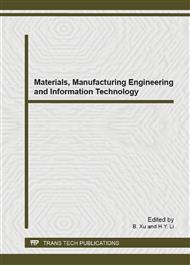p.82
p.86
p.90
p.95
p.101
p.105
p.110
p.114
p.118
Preparation and Properties of BR/SBR Blends Using Surface-Modified Nano Zinc Oxide
Abstract:
nanozinc oxide (n-ZnO) was synthesized by sol-gel method. The surface of n-ZnO was modified by a silane coupling agent. The modified n-ZnO was then used as rubber vulcanizing activator and nanofiller for BR/SBR blends. The size and morphology of n-ZnO were characterized by X-ray diffraction (XRD) and transmission electron microscopy (TEM). The effects of modified n-ZnO on cure characteristics, mechanical properties and thermal conductivity of BR/SBR blends were tested and analyzed. The use of modified n-ZnO resulted in less optimum cure time (t90), higher mechanical properties (anti-abrasion, tear strength, tensile strength, tensile modulus) and thermal conductivity at lower content compared to the conventional micro ZnO(c-ZnO).
Info:
Periodical:
Pages:
101-104
Citation:
Online since:
March 2014
Authors:
Price:
Сopyright:
© 2014 Trans Tech Publications Ltd. All Rights Reserved
Share:
Citation:


